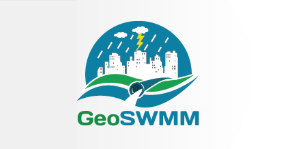Best Management Practices (BMP’s)/Low Impact Development (LID) Analysis
Problems associated with a wastewater or storm water network such as the volume of spillage, flooding and the concentration of any pollutants or sediment build-up are increasingly being solved by resorting to Low Impact Development (LID). The design of LIDs allows them to intercept, store and/or infiltrate precipitation before it arrives at the conveyance system. LIDs are being integrated into both new and existing development design with a view to promoting infiltration, reducing storm water runoff and improving received water quality.
GeoSWMM streamlines the modeling of LIDs on either a detailed, lot-level scale or a subwatershed/watershed scale for planning studies. The deterministic approach models physical processes within a variety of LID control devices.
Supported LIDs include:
- permeable pavements,
- bio-retention areas and rain gardens,
- rain barrels, cisterns with water reuse,
- vegetative swales and buffer strips,
- infiltration trenches and more.
Dynamic System Analysis/Dual Drainage Design
Fast and accurate system modeling, analysis and design, be it major or minor, are possible with GeoSWMM’s innovative tools. This implies that the program can be utilized in the design and analysis of new, existing and combination of new and old urban drainage systems where surface flows are routed over the land surface (major system e.g. roads, swales, street sags and storage areas) while the runoff partly and simultaneously flows in the underground conveyances (minor system e.g. sewer pipes and associated infrastructure). Both design storms (from 1:100 and larger to 1:1 and smaller) and long-term continuous rain data are incorporated in the tool. One feature special to GeoSWMM is that it enables the user to plot the longitudinal profile, dynamic energy and hydraulic grade profiles for each part of the dual drainage system on single or multiple screens concurrently.
Watershed Management Modeling
GeoSWMM provides not only detailed, separate urban and watershed modeling capabilities, but also thr unique scope to integrate urban storm/combined sewers and watershed models with dynamic interaction:
- Conduct in-depth study of sub-areas/sub-systems of the models
- Craft complete macro models containing natural/rural areas, river systems, urban drainage systems, storage, treatment and receiving waters
- Make use of complete methods for the generation of subcatchments and the production of open channels from digital elevation models
- Keep track of pollutant build-up, groundwater interflow, routing and removal, wash-off, modeling, real-time control and backwater effects from receiving channels.
Wet Weather Sanitary Sewer Analysis/Stormwater Management
GeoSWMM simplifies the design effort needed to meet US EPA regulations containing NPDES permits, CMOM and/or TMDL requirements, by offering useful options to design stormwater management control strategies for lessening sanitary sewer overflows (SSO), combined sewer overflows (CSO), surcharging, water in basements (WIB), rainfall-dependent inflow and infiltration (RDII) and/or street flooding. Tools that enable powerful importing, QA/QC and network building are notably time-saving in case of large models.
Water Quality Modeling
Proper generation of non-point source pollutant loadings for waste load allocation studies is available through GeoSWMM. GeoSWMM offers a useful way to design control strategies to maintain stormwater quality released to receiving waters and thus eases the design effort involved in meeting water quality regulations.
Detention Storage/ Detention Pond Design
In GeoSWMM, you can effortlessly size detention facilities and their appurtenances for preserving water quality and controlling flooding. Necessary storage volume (to match pre-development peak flow or other criteria) can be determined on the go and multiple physical outlet structures can be flexibly modeled through either exact deterministic modeling of multiple physical outlet structures or empirical rating curves. Tail water submergence, backwater effects, energy losses and more can be analyzed and accurately modeled here, taking into account the pond infiltration/exfiltration and evaporation. By comparing long-term continuous scenarios with unlimited quantity of quality constituents, pollutant removal and/or seasonal behavior can also be validated.

